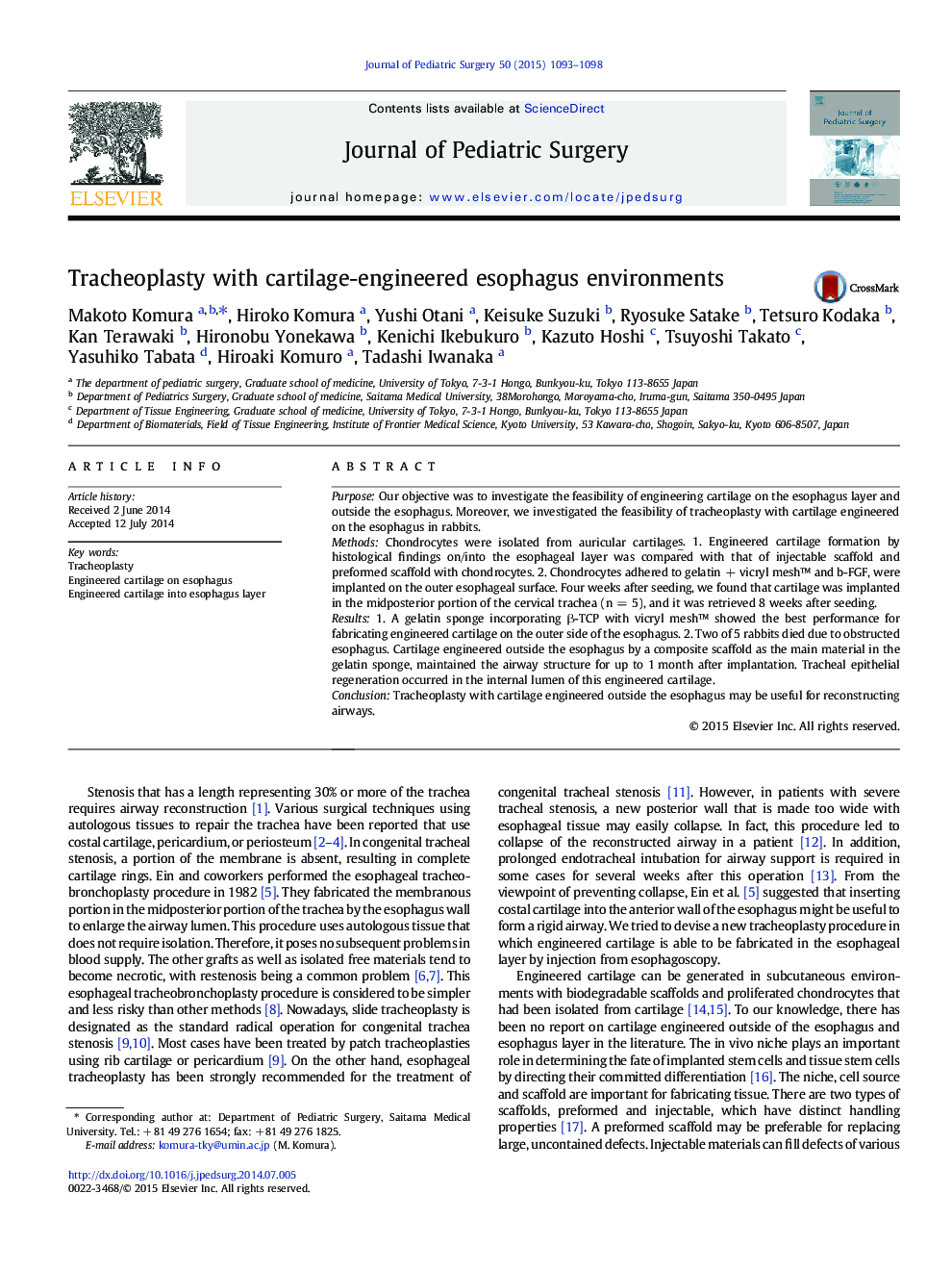| Article ID | Journal | Published Year | Pages | File Type |
|---|---|---|---|---|
| 4155437 | Journal of Pediatric Surgery | 2015 | 6 Pages |
PurposeOur objective was to investigate the feasibility of engineering cartilage on the esophagus layer and outside the esophagus. Moreover, we investigated the feasibility of tracheoplasty with cartilage engineered on the esophagus in rabbits.MethodsChondrocytes were isolated from auricular cartilages. 1. Engineered cartilage formation by histological findings on/into the esophageal layer was compared with that of injectable scaffold and preformed scaffold with chondrocytes. 2. Chondrocytes adhered to gelatin + vicryl mesh™ and b-FGF, were implanted on the outer esophageal surface. Four weeks after seeding, we found that cartilage was implanted in the midposterior portion of the cervical trachea (n = 5), and it was retrieved 8 weeks after seeding.Results1. A gelatin sponge incorporating β-TCP with vicryl mesh™ showed the best performance for fabricating engineered cartilage on the outer side of the esophagus. 2. Two of 5 rabbits died due to obstructed esophagus. Cartilage engineered outside the esophagus by a composite scaffold as the main material in the gelatin sponge, maintained the airway structure for up to 1 month after implantation. Tracheal epithelial regeneration occurred in the internal lumen of this engineered cartilage.ConclusionTracheoplasty with cartilage engineered outside the esophagus may be useful for reconstructing airways.
